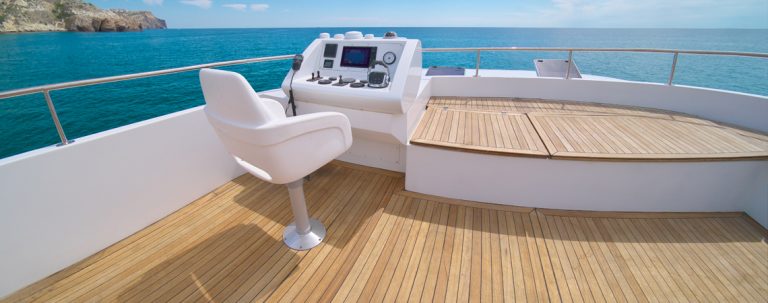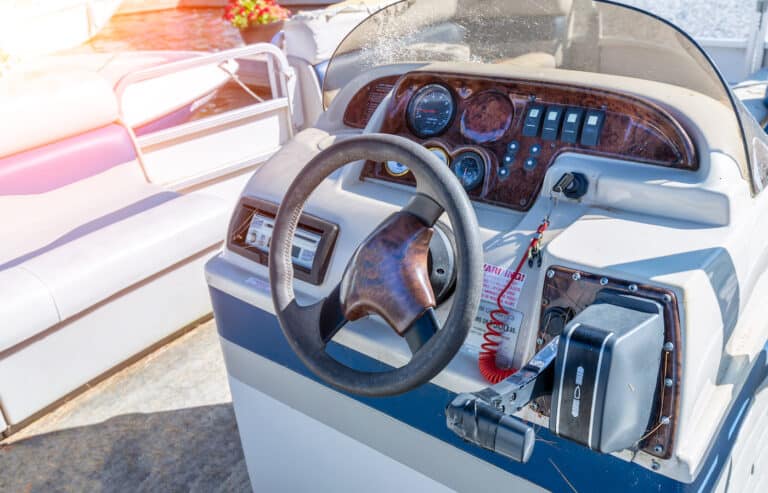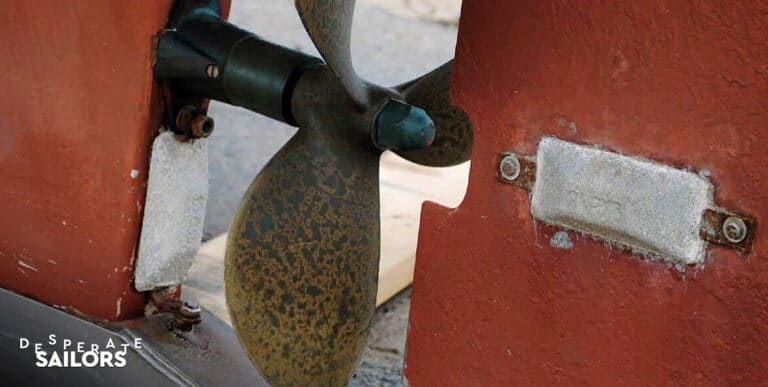Affiliate Disclosure: Some of the links in this post are affiliate links. As an Amazon Associate, we earn from qualifying purchases. Read our affiliate policy for more information.
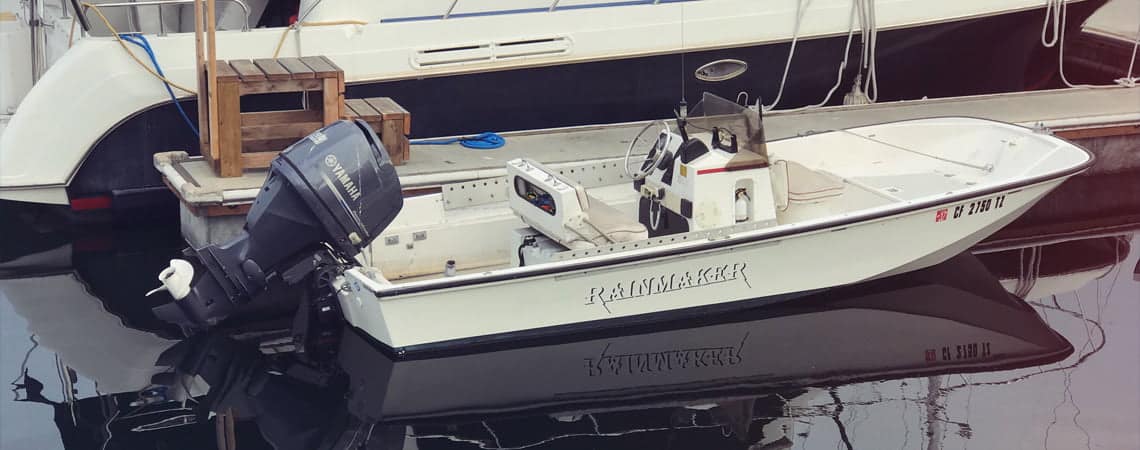
How to Change Fuel Water Separator Filter on an Outboard
The goal of today’s guide is to teach you how to change fuel water separator filter on your boat. We wouldn’t say that installing a fuel water separator is that challenging, but it may throw off a lot of boaters, especially those who are dealing with separators for the first time.
Below, we’ll have a look at what fuel water separators are, talk about their importance, and then provide you with a step-by-step guide for fuel water separator outboard installation.
In This Article hide
- What is a Fuel Water Separator?
- Do I Need a Fuel Water Separator on My Boat?
- How to Install a Fuel Water Separator on an Outboard
- Necessary Tools and Supplies
- Step 1. Cut Off Electricity and Fuel Lines on Your Boat
- Step 2. Prepare the Fuel Water Separator for Installation
- Step 3. Locate a Suitable Spot for the Separator
- Step 4. Mark Installation Points and Drill Mounting Holes
- Step 5. Install the Separator Along with Valves and Hoses
- Step 6. Bleed the Fuel Water Separator
- Step 7. Perform Last Checks and Start the Engine
- Choosing the Right Fuel Water Separator for Your Outboard
- Frequently Asked Questions
- How to Change Fuel Water Separator Filter – Conclusions
What is a Fuel Water Separator?
A fuel water separator is a piece of tech intended to filter out water from fuel before it reaches the engine.
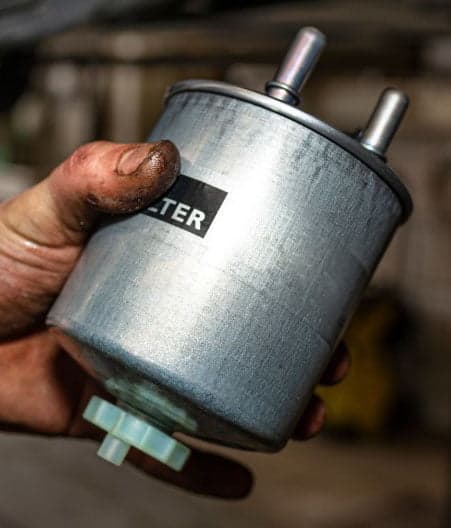
Conventional fuel filters are not designed to trap much water – this task is performed by fuel water separators instead.
How do fuel water separators work? Well, at the very basics, the process is as follows:
- A pleated paper element separates water into large droplets.
- The droplets fall onto a water bowl at the bottom of the device.
- Small water particles that did make it through the paper element get trapped by a layer of silicone-treated nylon and again fall onto the water bowl.
- The trapped water is then discharged either manually or automatically, depending on the separator design.
This is how generally fuel water separators work – the exact water filtering process may vary from separator to separator.
Do I Need a Fuel Water Separator on My Boat?
The next question is as follows – do you need a water fuel separator filter in your boat? And if you do, why?
Well, water affects your boat engine in a bunch of negative ways:
- Rust. Iron or steel surfaces that come into contact with water are likely to rust. Aside from structurally damaging your motor, rust particles may also get into your fuel. As rust-filled fuel goes through the motor, the abrasion of rust particles may severely damage its components.
- Abrasion. Water has a lower viscosity than gasoline and does not lubricate engine parts as well. In fact, water is a terrible lubricant. With that, increased water content in your fuel is going to increase wear inside the motor.
- Bacterial growth. Water may foster bacterial growth and mold in your fuel system. If you allow these to build up, then you will not have a fun time cleaning your fuel tank, hoses, and engine.
- Low boat performance. As a consequence of all the negative effects of water, your boat may start performing badly. Among the possible effects are low RPMs, slow acceleration, and not only.
Now, one thing that you may be wondering about is how water can get inside the fuel.
In the US, gasoline contains about 10% ethanol. The purpose of the added ethanol is to oxygenate the gasoline for more efficient burning. This lowers emissions and also perhaps makes your boat more fuel-efficient.
The problem with ethanol is that it attracts moisture from the surrounding air. This is especially exacerbated when your fuel tank is not full and has a lot of air inside.
Aside from this, water may get inside your fuel in a bunch of different ways:
- Moisture may soak into gasoline if it’s improperly stored.
- If your motor components aren’t properly sealed, then water may get inside as well.
With this in mind, a fuel water separator is a preventative measure that allows you to keep your fuel system intact and your engine performing to its potential.
How to Install a Fuel Water Separator on an Outboard
Now, let’s cover fuel water separator outboard installation.
Necessary Tools and Supplies
To install a fuel water separator on an outboard, you will need the following tools:
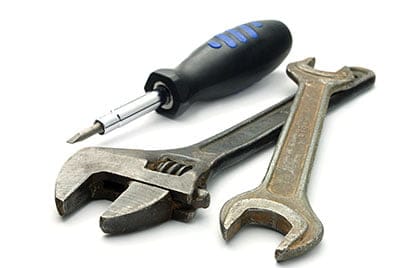
- Drill with drill bits that are sized right for the mounting holes.
- Spanner (to install hose connectors and blanks).
- Screwdriver.
- Boat fire extinguisher for safety.
- A container to catch fuel.
- Rags for post-installation cleanup.
Additionally, you may need:
- Ball valve or blanking plugs to isolate the separator.
- Fuel hoses for either end of the fuel water separator.
- Jubilee clips/clamps for the fuel hoses.
Step 1. Cut Off Electricity and Fuel Lines on Your Boat
Before starting any installation, you should cut off electricity and fuel lines on your boat. This is to avoid electrocution and leakage of fuel as you disconnect your fuel lines to install the separator.
At this stage, you should also identify which fuel hoses will need blanking.
NOTE: If you are installing the separator indoors, then you should also open all hatches to ensure good ventilation.
Step 2. Prepare the Fuel Water Separator for Installation
Next, unpack your separator and make sure that you have all the necessary fittings. Once you make sure that everything is there, you should assemble your fuel water separator.
The assembly process differs from separator to separator, so you should check out your unit’s instructions for more specific guidance.
You may also want to pre-fill your separator with fuel, though this is not necessary. Pre-filling allows you to displace the air inside and prevent large amounts of air from getting into your fuel system.
Step 3. Locate a Suitable Spot for the Separator
Your fuel water separator should be placed in a visible and accessible location. This is so that you can easily check the separator for water, drain it, or replace the filter when necessary.
Your primer bulb should be easily accessible as well.
Additionally, the location of the separator should be clear of any moving hoses or cables that may rub against the separator.
Step 4. Mark Installation Points and Drill Mounting Holes
Mark the installation points for the separator. Place the separator against the location and mark the mounting holes with a pencil.
At this stage, you should also confirm that you have chosen a proper place for your fuel water separator.
The separator should be oriented vertically, and its inlet and outlet fuel lines should be positioned conveniently for you without any kinking. Aside from that, it should be placed in the fuel line that goes to the engine, but before any filters, primers, fuel pumps, or regulators.
Once you’ve marked the installation points, drill suitable holes for the fasteners you’ve chosen.
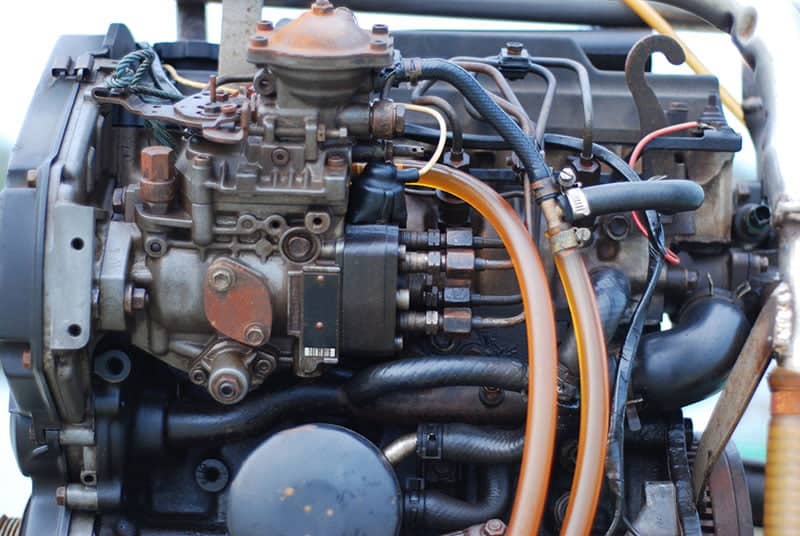
Step 5. Install the Separator Along with Valves and Hoses
Next, mount the fuel water separator.
- If you will be using a ball valve for safety, then install it on the inlet side. This will allow you to easily block the flow of fuel when you need to replace the filter.
- You should smear a fuel sealant to the threaded section of the ball valve. Then, mount the ball valve to the separator using a spanner.
- Next, mount hose connectors to the separator, again using a fuel sealant at the threads and a spanner to tighten the connectors.
- If there are any ports that need blanking, then either use blanking plugs or additional ball valves.
- Place two clamps on each of your hoses using jubilee clamps/clips.
- Make sure that your hose configuration follows the separator’s arrow direction.
- Connect your hoses to the hose connectors you installed in step 3.
- Tighten all the jubilee clamps/clips.
Step 6. Bleed the Fuel Water Separator
Bleed your fuel system up to the engine. Then, attach the fuel hose to the engine. On an outboard, squeeze the primer bulb until it’s firm.
Step 7. Perform Last Checks and Start the Engine
Before starting up your boat engine, make sure that there are no visual leaks or fuel residue anywhere. Check the configuration last time to ensure that everything’s fine.
Finally, set up your water cooling system and power the engine on.
Check for leaks in your fuel water separator configuration. If everything is fine, then you should next take your boat for a ride. Accelerate up to wide-open throttle and make sure that you are getting sufficient fuel to the engine and that there are no leaks anywhere.
Choosing the Right Fuel Water Separator for Your Outboard
We suggest that you research fuel water separators a bit more yourself to make the right choice. We’ll still cover some basics below.
You should be able to find a fuel water separator at local marine stores or online retailers. A few online places to buy from are:
- Marine Products Store
Marine Products sells a somewhat limited assortment of fuel water separators, but you should still check them out. - Wholesale Marine Store
Wholesale Marine offers a much more diverse range of fuel water separators, including standalone separators and kit separators. - Amazon
If the previous two stores didn’t have anything suitable for your needs, then take a look at Amazon. Amazon offers free shipping for many of its products, easy returns, plenty of buyer reviews to read, and a few nice benefits for Prime subscribers.
Filters
To effectively filter out water, your fuel water separator’s filtration system should be capable of trapping 10-micron particles.
Fuel Water Separator Form-Factors
Marine fuel water separators are available in two form-factors – standalone separators and kits. Kits include the separator plus mounting hardware. Unless you are sure that you have all the necessary hardware, go for a fuel water separator kit.
Single and Dual Marine Fuel Water Separators
Keep in mind that some fuel water separators are intended for two-tank or two-engine systems. You may use such separators on single-tank/engine boats as well, but you will have to block off one of the separator’s sections.
Typically, fuel water separator kits include fittings and blanking plugs to allow for single-tank/engine installation, but you should always make sure before buying anything.
Bowl Material
Fuel water separators intended for outboards typically have plastic bowls. If you are looking for an inboard fuel water separator, then make sure that you get one with a glass bowl. Glass bowls will not melt in the event of a fire.
You may go for a metal bowl too, but these aren’t transparent and thus don’t allow you to visually inspect the bowl.
Frequently Asked Questions
Where to Install Fuel Filter on Outboard Motor?
On an outboard, you should install the fuel water separator in the outlet line that delivers fuel to the engine but before any primer bulbs, other filters, regulators, or fuel pumps.
How Often Should You Change a Fuel Water Separator?
You don’t need to replace the entire fuel water separator, but the filters should be replaced occasionally. 1-2 times per year should be sufficient to ensure proper engine performance.
Do You Have to Fill the Water Separator with Fuel Prior to Installation?
Pre-filling fuel water separators with fuel is a good practice since it allows you to avoid large amounts of air getting into your fuel system. By filling your separator with fuel prior to installation, you are displacing the air inside with fuel.
How to Change Fuel Water Separator Filter – Conclusions
Now, you know how to change fuel water separator filters on a boat! Not only that, but you should also know how to choose a fuel water separator for boats correctly!
Now, once you’ve reached the end of this post, how about checking some others on our boating blog?
References
- Wikipedia – Microbial contamination of diesel fuel
- EIA – Biofuels explained
Disclaimers
All product names, logos, and brands are property of their respective owners. All company, product and service names used in this website are for identification purposes only. Use of these names, logos, and brands does not imply endorsement.
It is our policy to make every effort to respect the copyrights of outside parties. If you believe that your copyright has been misused, please provide us with a message stating your position and we will endeavor to correct any misuse immediately.
Some of the links in this post are affiliate links. As an Amazon Associate, we earn from qualifying purchases. This means if you click on the link and purchase the item, we may receive an affiliate commission, at no extra cost to you. This helps us keep this website alive. Learn more here.
Amazon Disclosure
DesperateSailors.com is a participant in the Amazon Services LLC Associates Program, an affiliate advertising program designed to provide a means for sites to earn advertising fees by advertising and linking to Amazon.com. As an Amazon Associate, we earn from qualifying purchases. Amazon and the Amazon logo are trademarks of Amazon.com, Inc., or its affiliates.
Please refer to our Privacy & Affiliate policy for more details.

